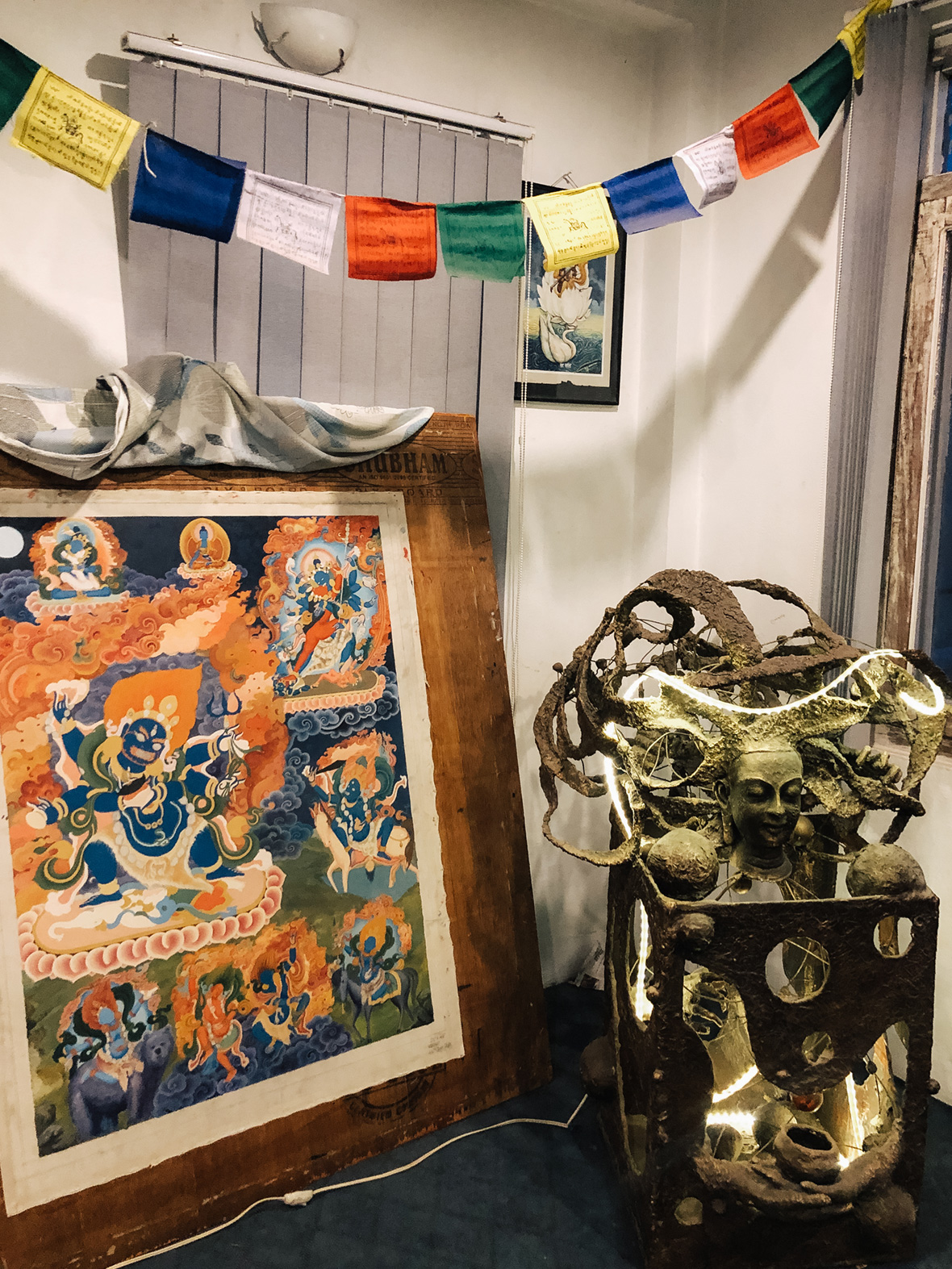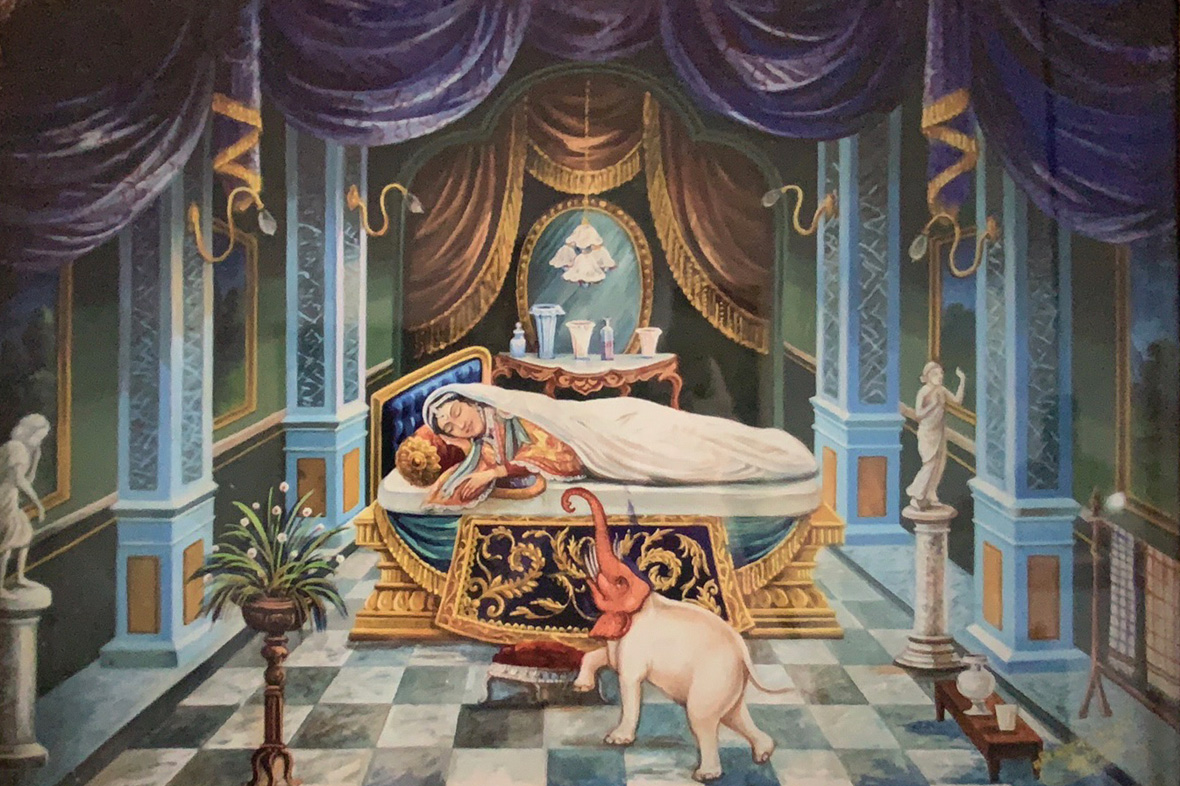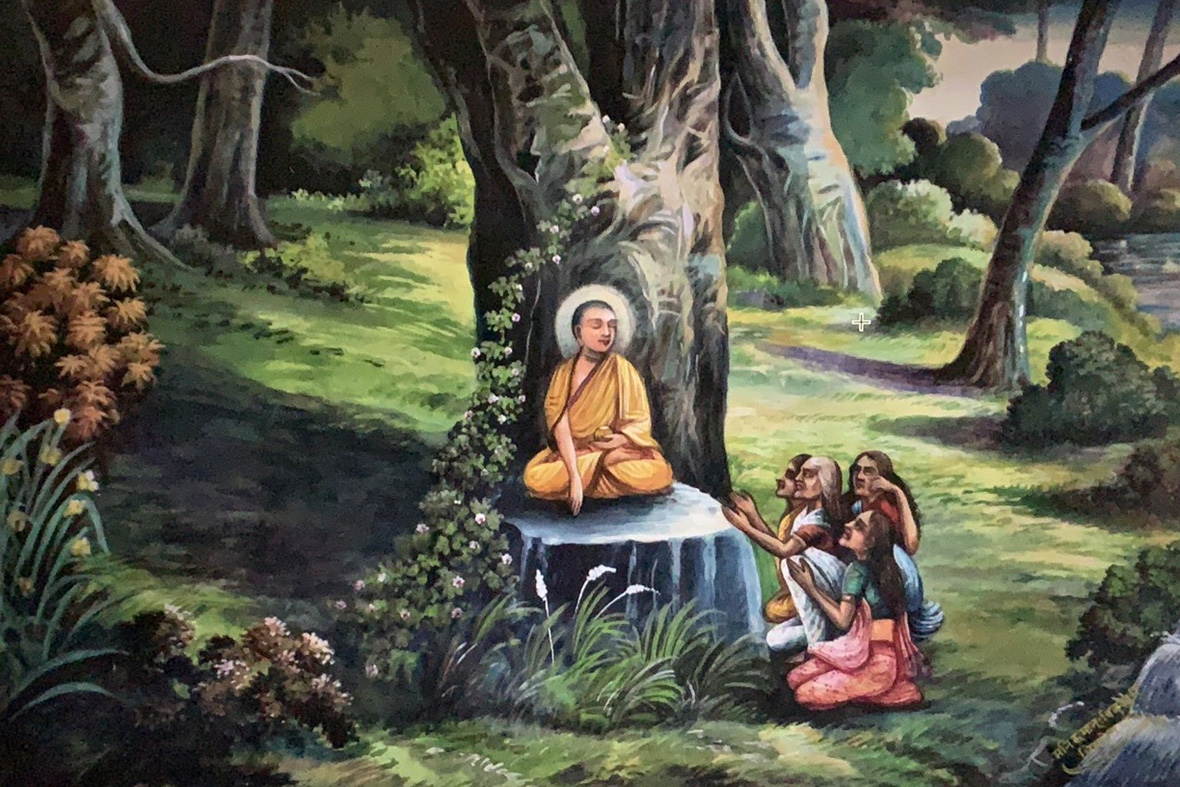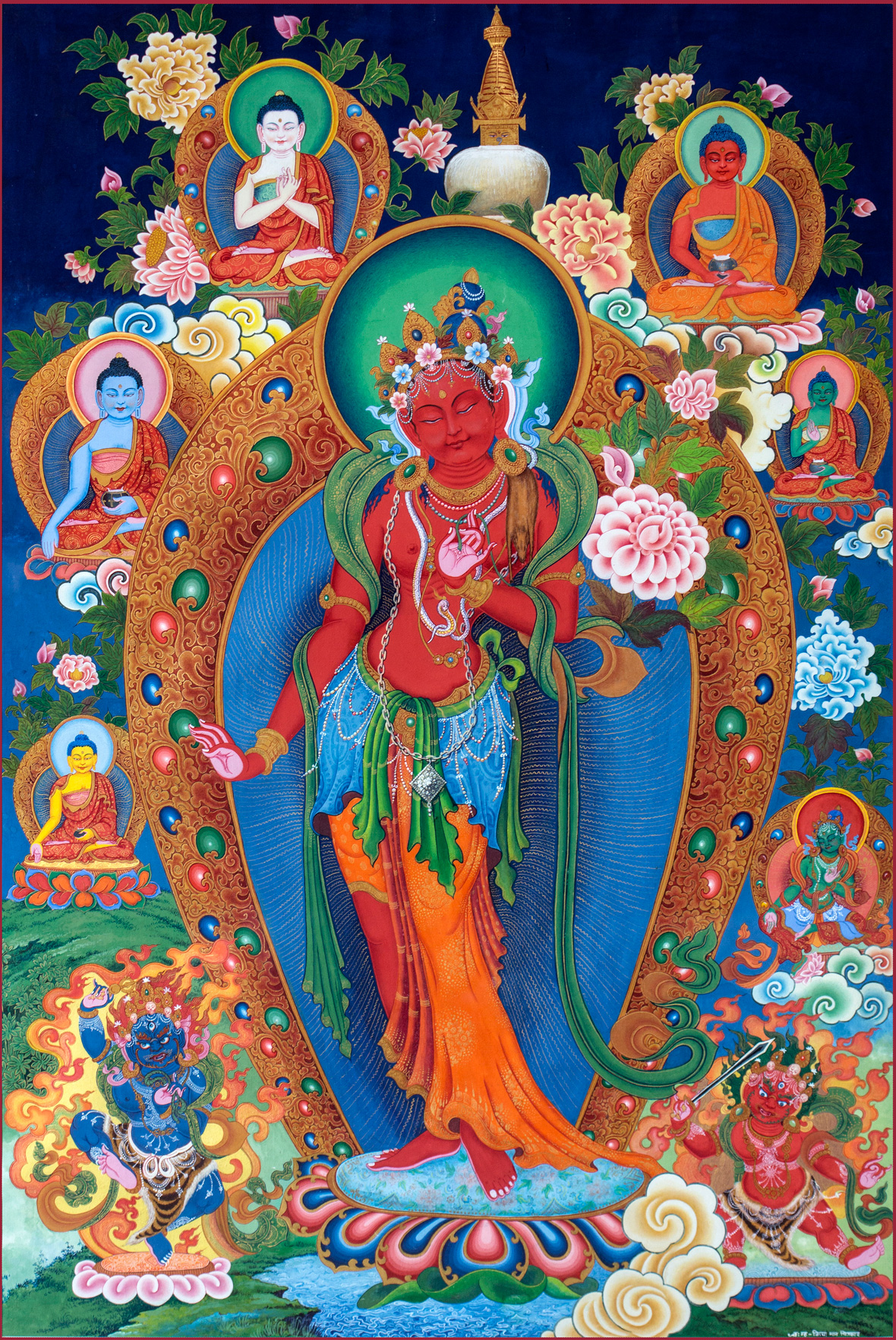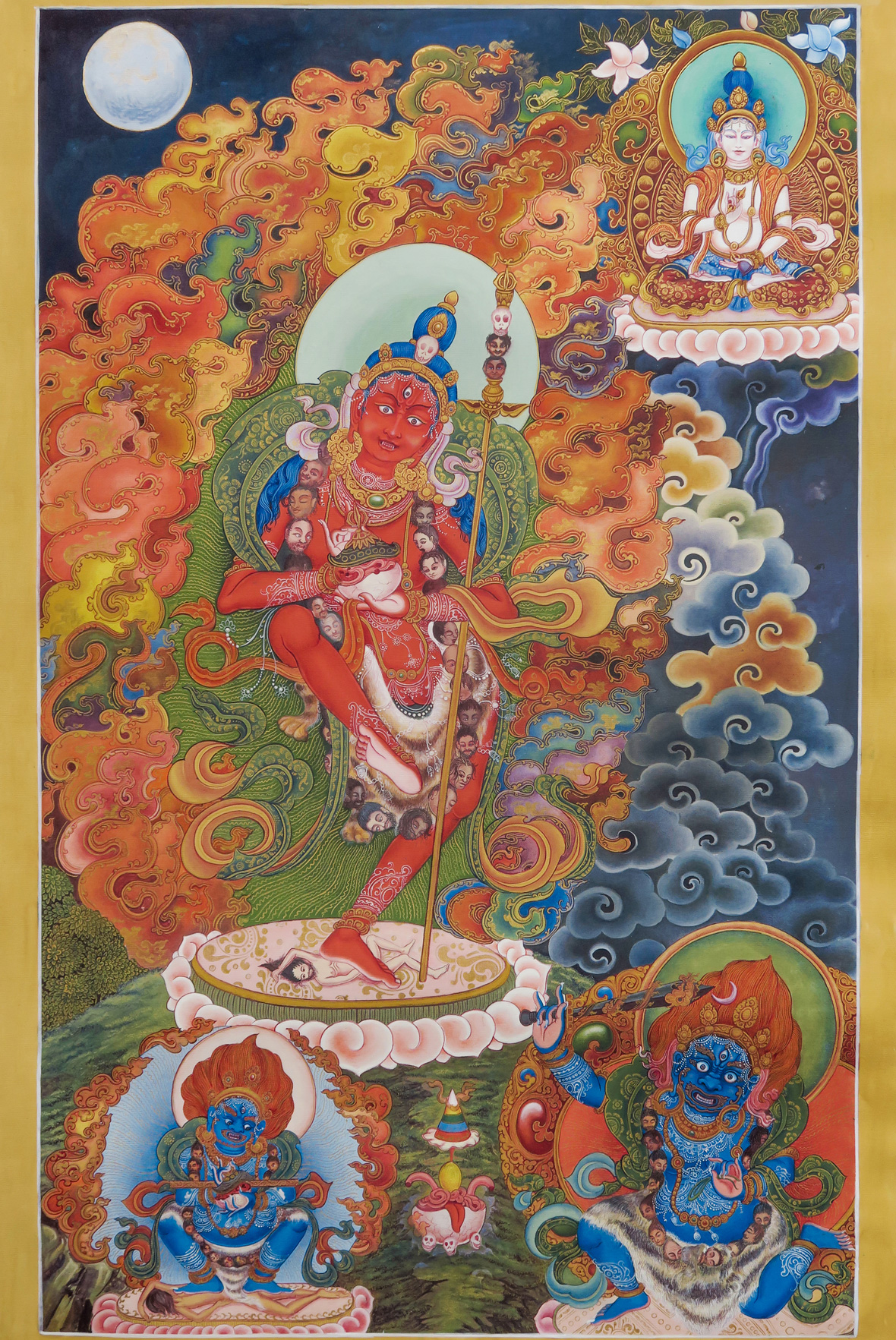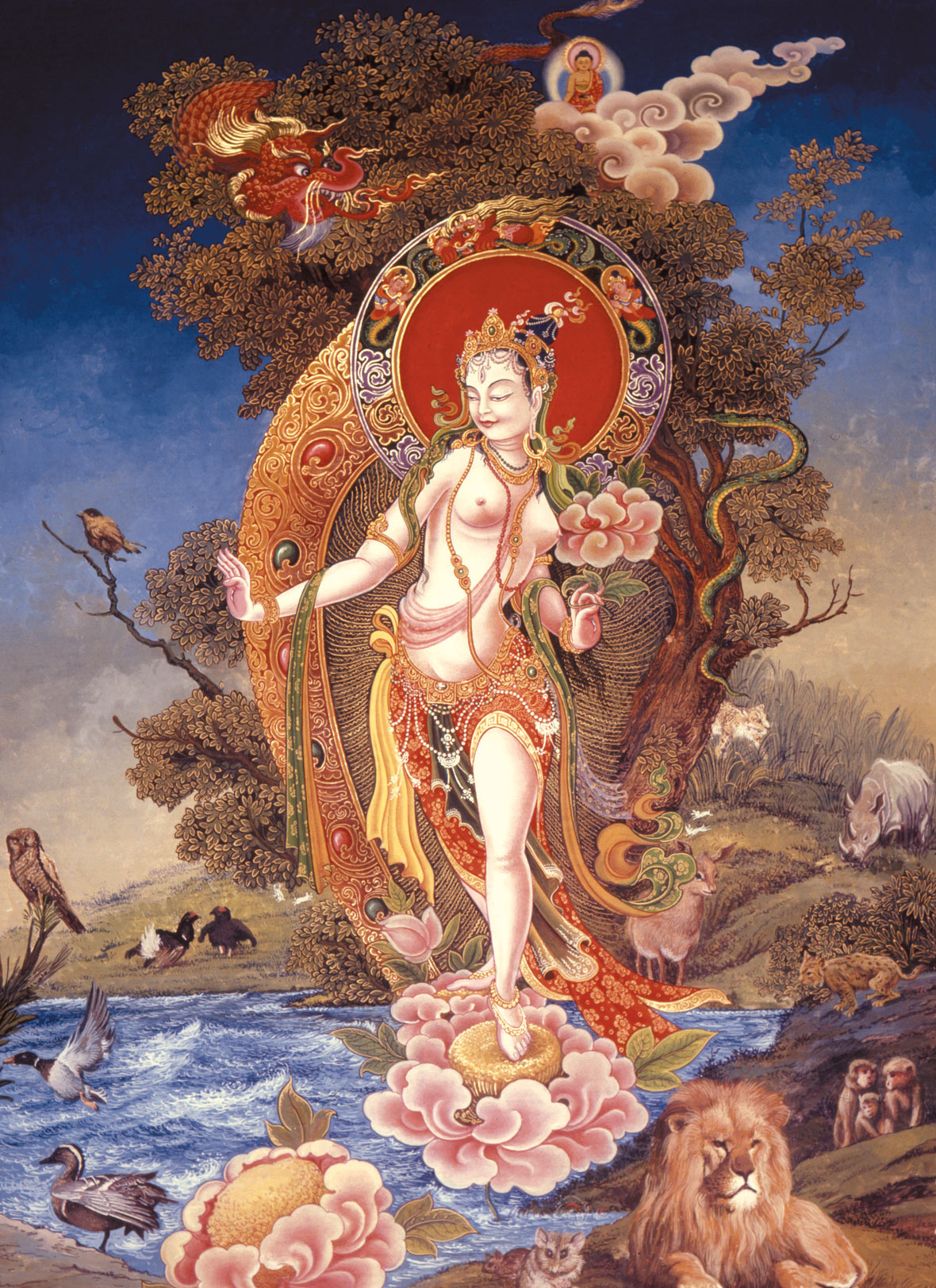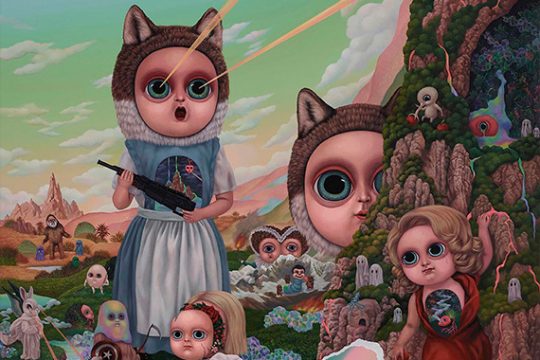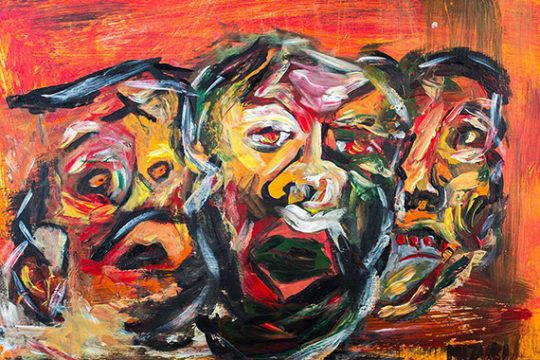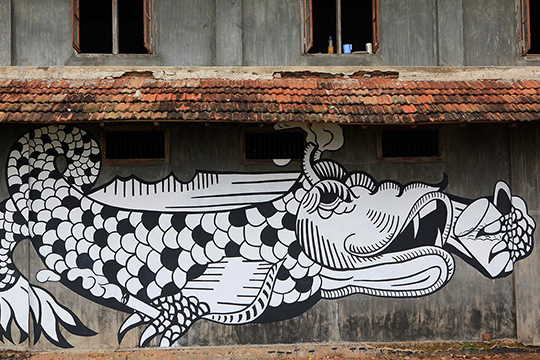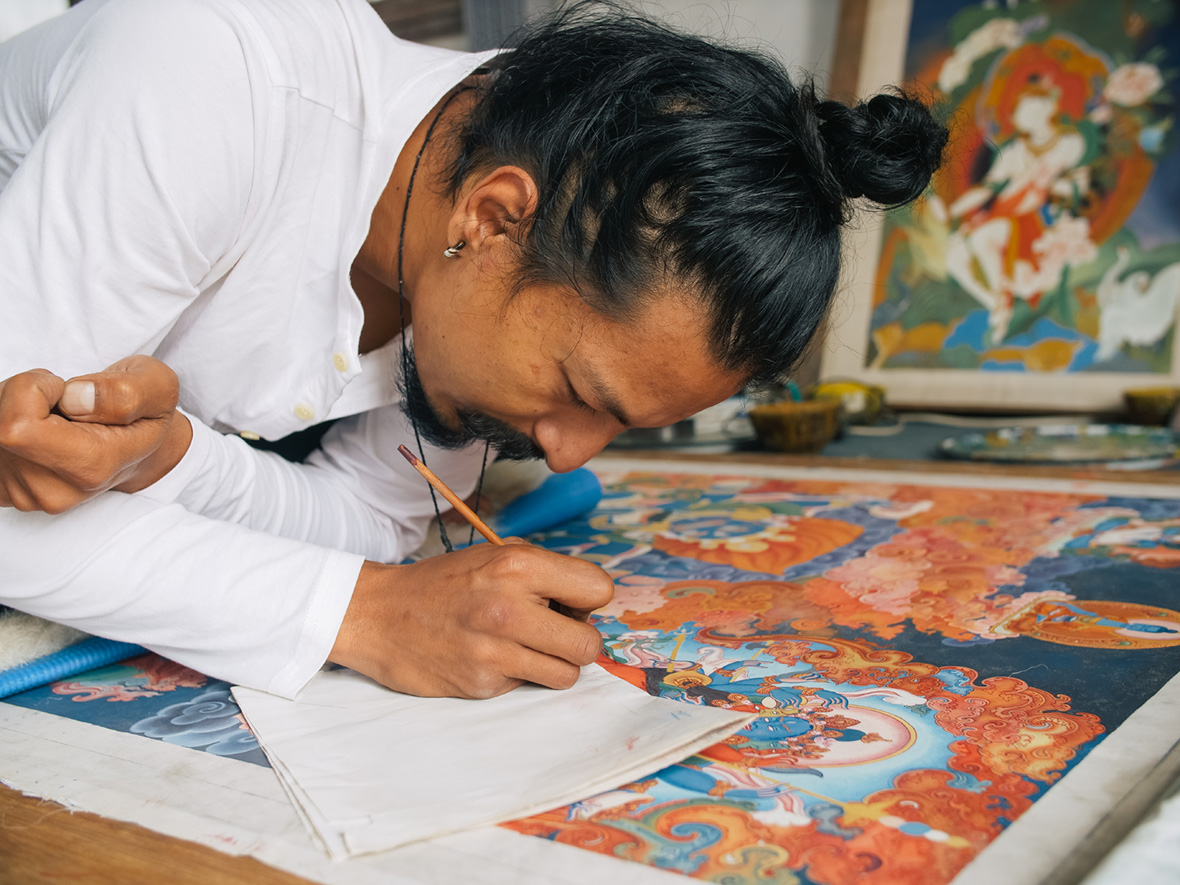
A name can be a potent thing. It can link you to your ancestors and might even shape your future. In Nepal, the surname Chitrakar is laden with significance, for it marks its bearer as a creator of sacred art.
Derived from Sanskrit, the name means “image maker” and designated a caste in Nepal’s Newar community that customarily worked as painters, sculptors, and general artisans, creating religious works in both the Hindu and Buddhist traditions. They say an icon only comes to life after once a Chitrakar paints its eyes.
Kichaa Man Chitrakar is one of many Chitrakars in the country, and he and his family live up to the name’s legacy. His home studio is in Kathmandu’s Nagarjun Municipality, overlooking dusty vistas of candy-colored houses. The staircases and walls of the family home are lined with paubhas, religious paintings similar to Tibetan thangkas, painted by the Chitrakar family.
有时候,姓名可以是一种非常有力的象征。它能追溯古往、陶造今来。在尼泊尔,姓氏 Chitrakar 具有庄重且深远的意义,它象征着宗教艺术的缔造者(来源于梵文,意为 “造图人”),也是当地古老的纽瓦(Newer)社区里一个特定的社会阶层。使用这种姓氏的人通常是创造传统印度教和佛教的画家、雕刻家以及手艺人。当地曾有人说,一幅作品只有在 Chitrakar 雕磨过后,才方能惟妙。
Kichaa Man Chitrakar 是这片土壤上的 Chitrakars 之一,他与家人共同用血脉续写着这个名字的传奇。家庭的工作室位于尼泊尔首都加德满都市纳伽自治区,在那里可以俯瞰到尘雾飞扬的糖果色房子远景。家中旋转式楼梯的墙壁上排列着许多帕巴画(Paubha,尼泊尔纽瓦人的传统宗教绘画,与西藏的唐卡画类似),这些都是来自 Chitrakar 家族的手笔。
Traditionally Nepal has only a handful of ‘master artists’ dedicated to paubha painting at any one time, and Kichaa’s family includes two: his great uncle, Manik Man Chitrakar, and his father, Prem Man Chitrakar. Manik Man is known as one who helped shape the modern Newar art renaissance. Prem Man in particular is credited with making Newari art available beyond his family and his caste. “Master artists traditionally taught only within their family and caste. While tradition and upholding the Chitrakar legacy was important to Prem Man, his big heart and desire to share knowledge saw him take him many students outside of his family. This makes him one of Nepal’s most important teachers,” says Rajan Sakya, founder of the Museum of Nepali Arts (MONA).
传统上来讲,尼泊尔历史中可以称得上大师级的帕巴画艺术家为数不多,而 Kichaa 的家族里就占了两位:分别是他的舅舅 Manik Man Chitrakar 和他的父亲 Prem Man Chitrakar。其中,Manik Man 被认为是当代纽瓦艺术复兴的塑造者;父亲 Prem Man 的技艺在整个家族中尤为突出,因而也备受赞誉。尼泊尔艺术博物馆(Museum of Nepali Arts)创建人 Rajan Sakya 说道:“传统意义上讲,大师级的艺术家只会在家族和种姓范围内授课。传承,对于 Chitrakar 家族来说尤为重要,而出于宽广的胸襟与对分享知识的热情,让 Prem Man 也曾教授过许多家族以外的学生。这些经历让他成为尼泊尔最德高望重的老师之一。”
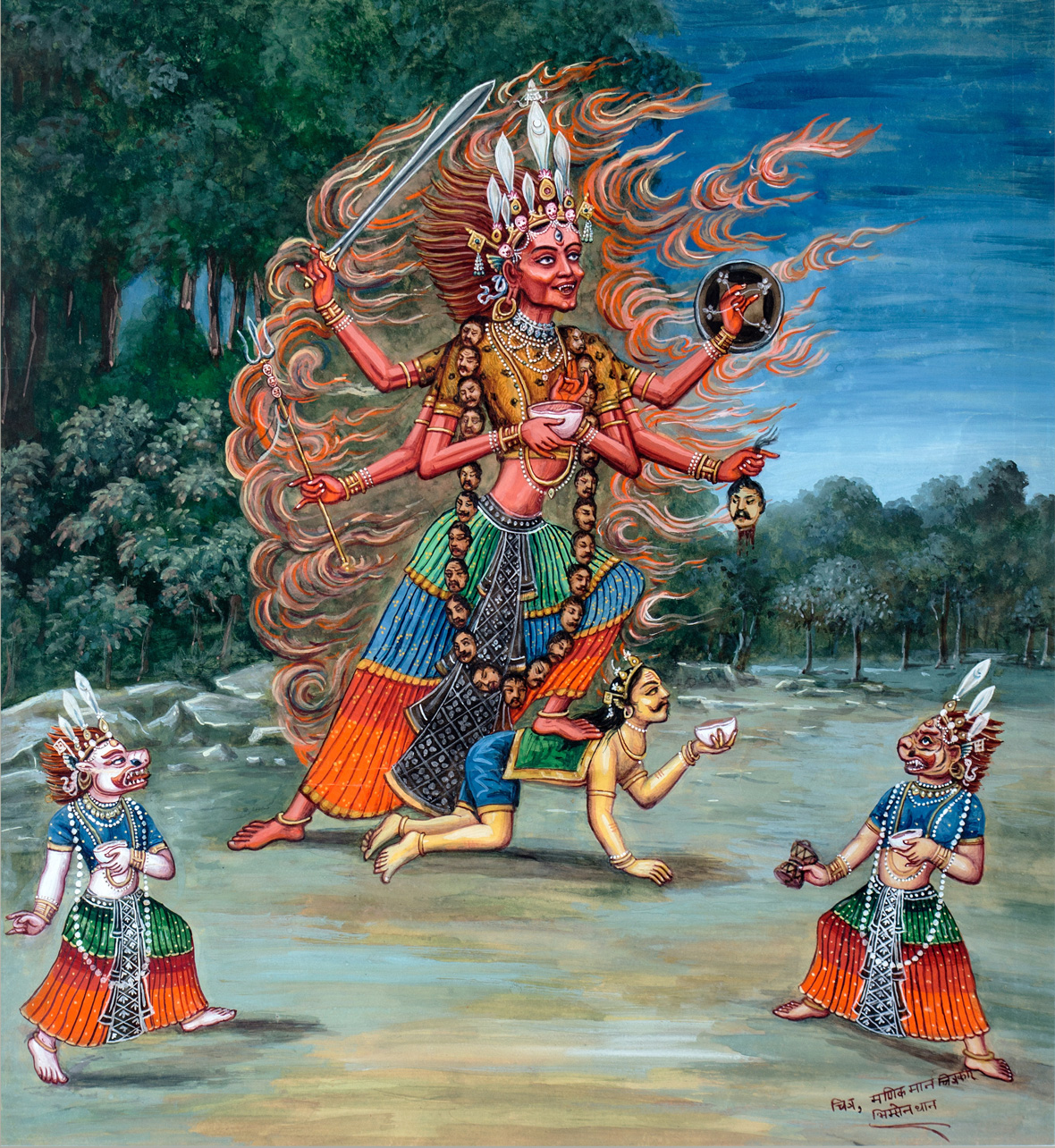
Paubha paintings date back to the 11th century, and the first recorded paubha by a Chitrakar is from 1409 by Kesa Raja Chitrakar. More than works of art or historical relics, paubhas are objects of religious devotion believed to be messages from the gods. Their sacred nature means they must follow certain rules, with deities depicted in proper ratios and dimensions; and in their color, hand gestures, and facial attributes. What made Prem Man revolutionary was his fusion of divine tradition with new techniques. “He freed Nepali artists to infuse life into tradition, by using realistic expressions and landscapes in his work. All established paubha artists in Nepal, including former students Samundra Man Singh Shrestha and Raj Prakash Tuladhar, have been influenced by his style,” Sakya explains.
帕巴画的形式最早可以追溯到遥远的十一世纪,史册中记载,第一幅由 Chitrakar 绘制的帕巴画来自 1409 年 Kesa Raja Chitrakar 完成的作品。帕巴画不仅是艺术和历史遗迹,它更是虔诚的象征,被认为是神灵下传的讯息。其神圣的本质也意味着必须遵循规矩和传统来进行创作,描绘神灵时要在一定的比例和尺寸下完成;甚至颜色、手势以及面部特征都需要仔细地琢磨。Prem Man 将传统的画法与新技术相结合,独具开创性意义。“他能将写实绘画融入在创作中,让画中的场景和现实生活联系紧密。这种传统与现代相结合的创作方式,在一众尼泊尔帕巴画艺术家们中开创了先例。那些饶有建树的当地艺术家,包括他的前任徒弟 Samundra Man Singh Shrestha、Raj Prakash Tuladhar 等人,都曾受过他很大的影响,” Sakya 说道。
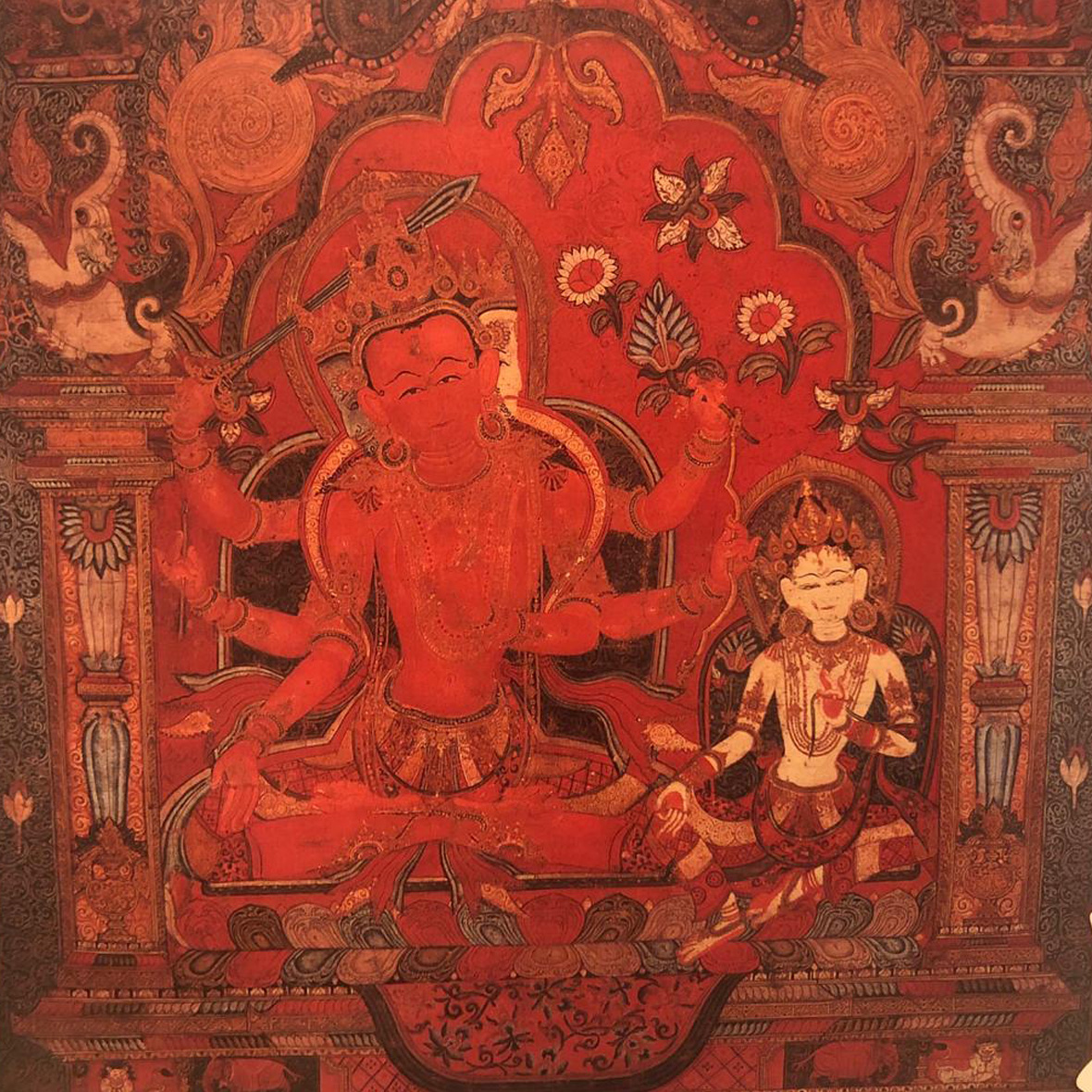
Growing up, Kichaa watched his father work almost every day. “Time passed watching my father paint. I learned everything I know from him,” he recalls. His technique is similar to his father’s, with detailed and lifelike deities and an asymmetric yet balanced composition. Creating a paubha is an exacting process that requires attention to the tiniest detail. To look closely at one of these paintings is to see a world of meaning in every brushstroke.
多年以来,父亲没日没夜的创作过程,在 Kichaa 脑海中历历在目。他回忆道:“父亲的画作陪伴着我的成长,让我从他身上学会了很多。” 因此,你会发现 Kichaa 的绘画手法与父亲极为相似,细腻与生动并重,看似不对称的构图方式又在某些方面达到平衡。创作帕巴画的过程是十足的功夫活,你必须全神贯注到最小的细节才行。如果近距离观看帕巴画,你会看到精雕细琢的微型世界。
When Kichaa speaks, he chooses every word deliberately, just as meticulous as each stroke of his brush.“My name means ‘shadow’ and was given to me by my father. He wished for me to live up to the expectations attached to the family tradition,” says Kichaa. A dream of studying animation abroad was thwarted when his father took him to Lumbini, a sacred pilgrimage site said to be Buddha’s birthplace, to work with him in a monastery. “He promised me a good amount of money, which he never entirely paid,” laughs Kichaa. But living and working with senior artists, he developed his own technique.
当 Kichaa 讲话时,他的一字一句也变得小心翼翼,就像缜密的笔画一样。Kichaa 在梵语中意思是“影子”,是多年前父亲帮他取的名字,希望他能继承传统,与父辈们如影随形。一次被父亲带往蓝毗尼修僧的经历(Lumbini,印度边境的佛教发源地与朝圣之地),让 Kichaa 出国学习动画的念头被彻底击碎。“当时他承诺付给我一大笔钱,但从未兑现,”Kichaa 笑着说道。之后的许多年里,他与年长的艺术家们一起共事,渐渐地打磨出属于自己的技艺。
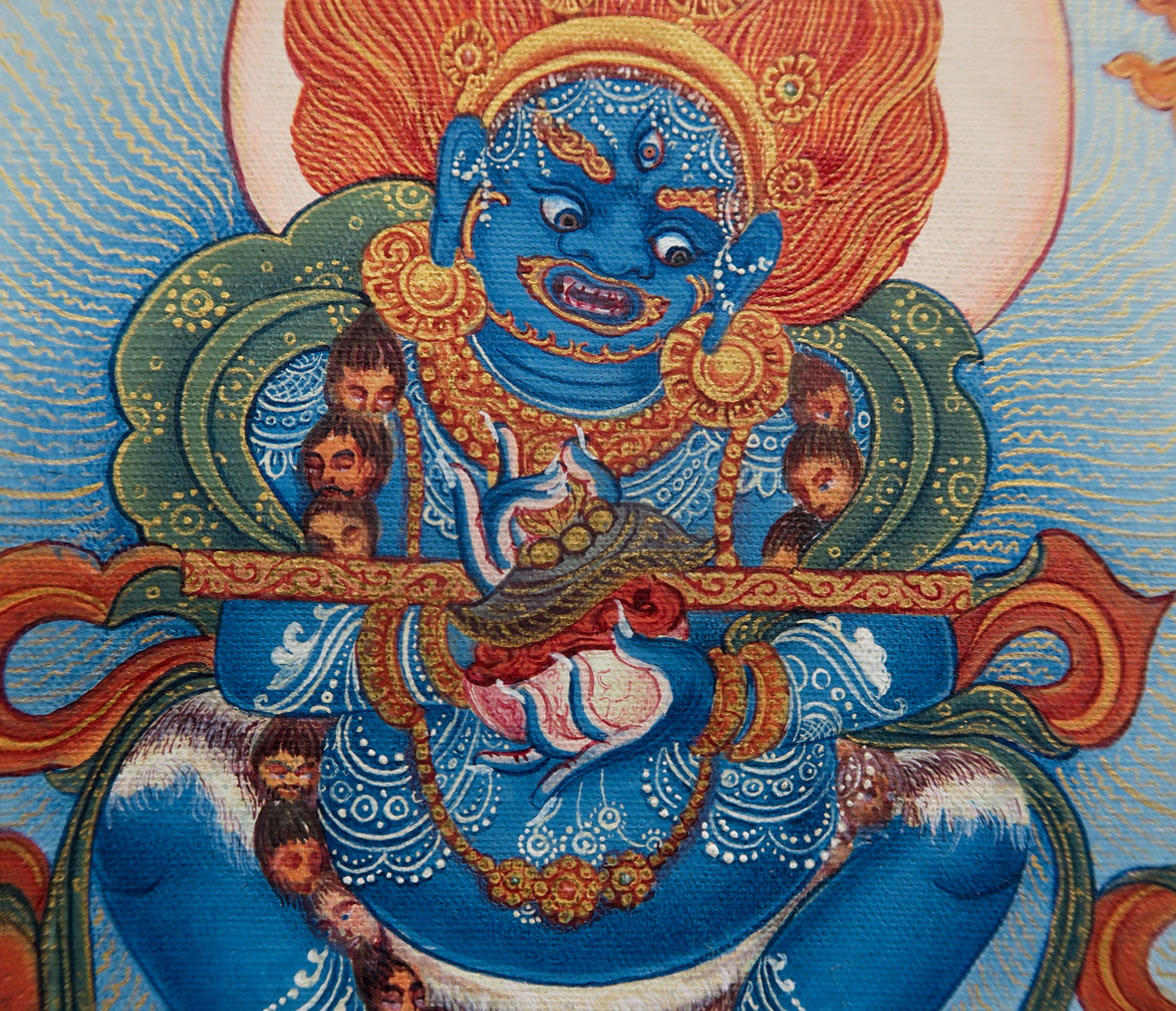
Kichaa is currently finishing up a painting titled Mahakala, which depicts the energy of the male deity Heruka. Heruka’s multiple hands signify power, while his tantric entanglement with the female god Sambhara indicates a harvesting of energy. The union of the two gives rise to Mahakala, a ferocious deity. The gods and goddesses wear garlands of severed heads—often misunderstood as sinners’ heads, notes Kichaa—that signify fearlessness in fighting against the ego and fear of death to attain the soul’s liberation. In reality, he says, one has to achieve enlightenment and live a moral life in one’s own way.
Kichaa 最近正在完成一幅名为《Mahākāla》(“大黑天”)的作品,描绘着男佛陀赫鲁嘎(Heruka)的磅礴之气。赫鲁嘎的多幅手臂象征力量,身上的女神 Sambhara 以宗密的方式缠绕,隐喻能量正在不断积蓄。两者的结合,更赋予画面的汹汹气势。他们脖子上悬挂一圈人头,以示面对自我与死亡的无所畏惧、以及出世和超脱灵魂的理想,“经常会被人误认为是有罪之人的头颅,”Kichaa 补充道,“现实中,一个人需要获得般若与领悟,故能以自己的方式过上理性的生活。”
In confluence with Kichaa’s artistic journey was a personal reckoning that brought him closer to art. In Nepali society which is bound by close social bonds, Kichaa underwent a time of unwanted media attention, leading to the breakdown of personal relationships at a time when Prem Man’s health also started deteriorating. Reconciling this emotional and social turmoil led to healing, which was a “necessary process to get back to art. The greatest obstacle to creation is one’s own state of mind,” says Kichaa.
Kichaa 塑造技艺的过程,像是一场对心内的追问,让他更接近于艺术本身。但在尼泊尔,人们通常被紧密的社会纽带所约束。随着父亲 Prem Man 健康状况的不断走低,Kichaa 正在经历一场不必要的媒体热议,宗族的联系似乎正在被舆论瓦解。面对这样的社会压力,唯一的解决方式就是把所以心思回归在艺术上面,Kichaa 说:“创作的最大障碍无外乎一个人的心境。”
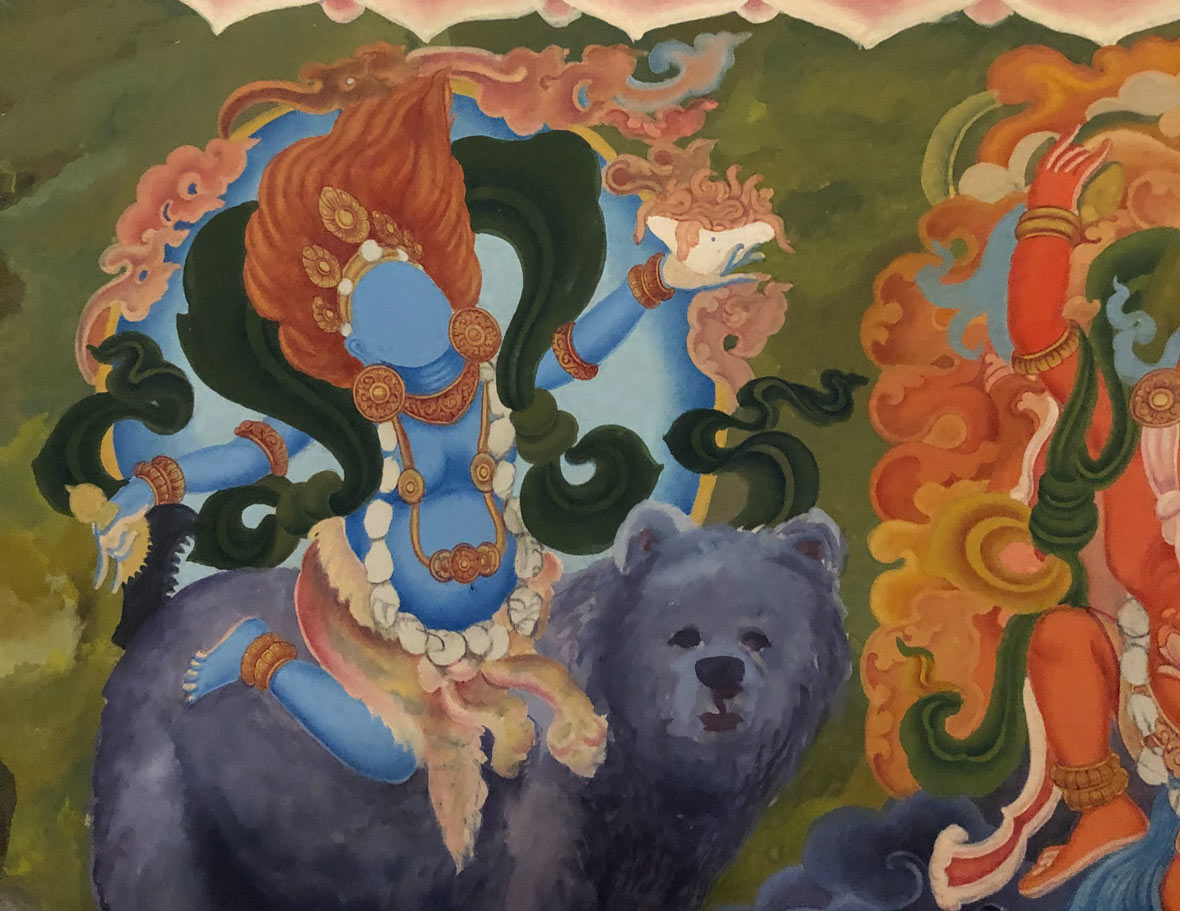
Paubhas teach philosophy through art, and their method is a form of meditation. This type of devotion has assisted Kichaa on his journey as a person and artist. As he’s made peace with the past, he hopes to dedicate his life to creating and conserving Chitrakar art for future generations. His next project is producing a documentary series exploring the origins and history of Chitrakar and paubha art. The first stop will be the ruins of Nalanda, an Indian monastery founded in the fifth century, where many Buddhist scholars who later settled in Kathmandu are believed to have studied.
Kichaa reflects: “These life lessons have been a harsh learning process but made me more patient and forgiving. Those [traits] are some of the most important virtues of being a paubha artist. When you break into many pieces, you are given the chance to reshape yourself—now, the creation and preservation of art is how I can touch lives in a positive manner. I like that.”
帕巴画通过艺术的形式承载宗教学问,艺术家们也往往通过对宗教内涵的冥想来进行创作。这样的方式,帮助 Kichaa 在创作道路上成就了艺术家身份。在与过去和平相处的同时,他希望倾尽一生来继承 Chitrakar 艺术。他的下一个项目是关于 Chitrakar 历史及根源的系列纪录片。拍摄的第一站将定于那烂陀寺废墟(Nalanda,一栋始建于五世纪的印度修道院),据信许多后来定居在加德满都的佛教学者都曾在此学习。
Kichaa 说道:“生活中的学习是一个严苛的过程,但能让人变得具有耐心、懂得宽容。而这也是成为一名帕巴画艺术家最重要的美德。当心境变得支离破碎,你也同时获得了重塑自己的机会。现在,艺术的创造与传承是我触及美好生活的方式。以一种正面的方式来打动他人,就是我喜欢做的事。”
Like our stories? Follow us on Facebook and Instagram.
Contributor: Yvonne Lau
Chinese Translation: Pete Zhang
Images Courtesy of Kichaa Man Chitrakar, Prem Man Chitrakar, and Rajan Sakya
供稿人与摄影师: Yvonne Lau
英译中: Pete Zhang
图片有 Kichaa Man Chitrakar、Prem Man Chitrakar 与 Rajan Sakya提供

